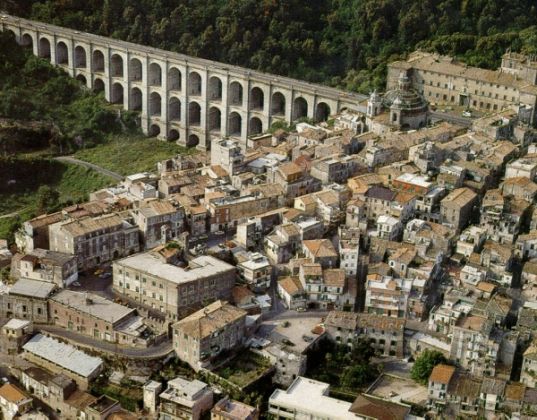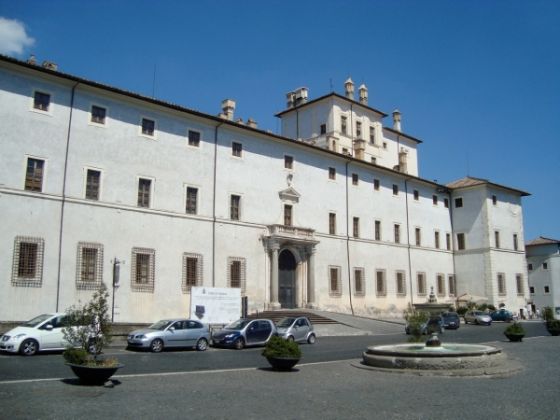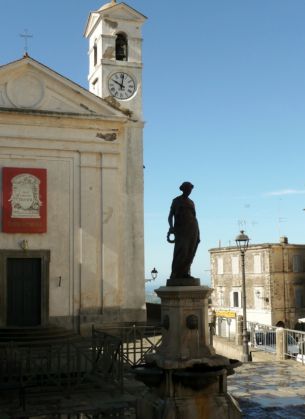Ariccia's unique and splendid artistic heritage is eclipsed by its most famous gastronomic product
Mention the name of Ariccia to any Roman and he or she will be sure to come up with the word porchetta. At weekends this small Castelli Romani town is invaded by hordes of hungry visitors from the capital who crowd into the string of fraschette (rustic hostelries) arrayed under the S. Rocco bridge and down the side of Palazzo Chigi park. The citizens of Ariccia have industriously elevated roast pig into an unrivalled porcine gastronomic treat, recognised by the EU in 2011 as an exclusive IGP (Indicazione Geografica Protetta).
However, there's a negative side: making the name of Ariccia synonymous with porchetta has tended to overshadow all the other things the town has to offer. Few people think of Ariccia as primarily a città d'arte. And yet, of all the charming Castelli towns and villages, Ariccia is the most authentic and coherent example of a true art city, planned by no less an architect than Gianlorenzo Bernini as a harmonic unit around the noble country retreat of his patron, Pope Alexander VII of the wealthy Chigi family.
The light-coloured Chigi palace is the true nerve centre of Ariccia. When the Chigi family took it over in 1661, it was a relatively modest hunting lodge. The pope, however, required a residence more suited to his status and commissioned his favourite artist to do something about it. In little over ten years, Bernini, assisted by his young apprentice Carlo Fontana, transformed not only the villa but the entire town into a baroque architectural showcase.
Opposite the palace, he built the domed church of the Assumption, often compared to the Pantheon, flanked by twin colonnaded pavilions. Bernini also built the church of S. Nicola at the bottom of the main street, and the imposing Madonna di Galloro sanctuary at the far end of town. The ample space between became the scenic Piazza di Corte, decorated with two fountains and enclosed at the Albano end.
The towering, three-tiered monumental viaduct and road leading into Ariccia came two centuries later. The palace was purchased from the Chigi heirs by Ariccia town council in 1988, along with all its original 18th and 19th-century art works, furnishings and fitments, and was opened to the public in Jubilee Year 2000. Curator Francesco Petrucci has followed every phase of the delicate restoration work. “It's practically been my life's work,” he says. “My graduation thesis was about Palazzo Chigi and I've supervised all the conservation processes and cultural initiatives ever since.”
Restoration is an on-going project. The most recent task has been the recovery and preservation of a series of rare 17th-century Cordoba leather wall hangings. “They are now back in position, so people can see the rooms as they originally were.” There are plenty of other treasures for visitors to enjoy, such as the extensive Chigi baroque art collection; a rare Bernini sanguigna (a drawing executed in reddish-brown chalk) in the chapel and two splendid gilded consoles, also by the master; the delightful old pharmacy, designed by Fontana; and sculptures, medallions, costumes and various art objects. Don't miss the melancholy Nuns' Gallery with the portraits of ten Chigi sisters, who all took the veil, and the Room of Beauties containing portraits of the pin-ups of the day, including the mistress of Cardinal Flavio I, the pope's nephew.
The third floor contains the recently opened Museum of Baroque Art, enriched with recent donations, and considered to contain the most comprehensive collection of Roman Baroque painting in Italy. Not surprisingly, the palace has been used as the set for many period films, including Visconti's masterpiece, The Leopard.
The visit won't be complete without a stroll in the shadowy paths of the Chigi park at the back of the palace. The 28 hectares of woodland constitute practically the last surviving example of the original wild wood that once covered the area that was, in ancient times, the realm of Diana Aricina, the goddess of nature. A later Chigi, Sigismondo, transformed the parkland under the residence into a romantic garden where nature was allowed to run riot; it became a favourite haunt of artists during the Grand Tour.
The garden contains many points of interest, such as the 17th-century great aviary, built like a Roman ruin, the snow pit (neviera), where snow was stored to make sorbets in summer, and a Roman sarcophagus allegedly belonging to Simon Magus, Nero's mysterious court magician. At the far corner of Piazza di Corte stands another treasure: the Martorelli Inn, where many famous 18th- and 19th-century artists and writers lodged. Their italicised names are inscribed on a plaque above the door: Guglielmo Turner, Cristiano Andersen, Enrico Longfellow. The inn possesses a series of enchanting frescoes on the legend of Diana by 18th century Polish artist Taddeo Kunze. The inn is at the top of Corso Garibaldi, which is lined with historic buildings, many dating back to the 16th and 17th centuries.
The Corso leads down past the fountain of Bella Flora, the ruins of an ancient Roman temple and the Palazzo Primoli-Bonaparte, built by Napoleon's brother as a summer retreat, to a spectacular finale: the Belvedere terrace, constructed on the old city walls, that opens onto a magnificent view over the Ariccia valley and Roman Campagna to the Mediterranean sea.
Side Notes
Where to eat. Enjoy the view at La Nicchia at the Belvedere Terrace. Tables outside when weather permits, tel. 069331960.
Things to do. Palazzo Chigi opening hours & guided tours vary according to season, tel. 069330053, www.palazzochigiariccia.it. Locanda Martorelli, by appointment, tel. 069332990, archeoclubariccia@alice.it.
The Sagra della Porchetta di Ariccia takes place each year in late summer and has been running since 1950.
Getting there. Regular Cotral bus service from Tuscolana, journey takes about 45 mins. There is also a train service from Termini to Albano Laziale, about 2 km from the centre of Ariccia.
The Chigi family. The powerful Chigi family came from Siena before it rose to prominence within the Roman aristicracy during the Renaissance. One of the family's more important figures was the immensely rich Agostino Chigi “the Magificient” (1465-1520) who was a significant patron of the arts during the Renaissance.
Margaret Stenhouse

























